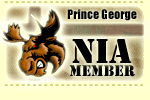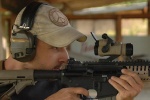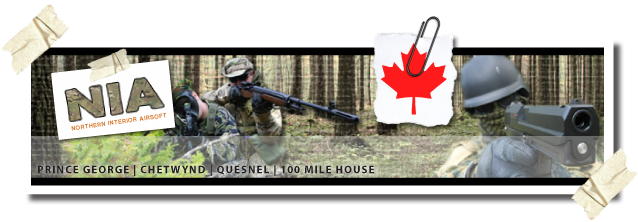=FRAG=
PG MEM


Number of posts : 274
Location : in the Boonies
Registration date : 2005-10-25
Player Info
Club Status: Member
Geo: Downtown
Tags:






 |  Subject: Cover, Concealment and Camouflage Subject: Cover, Concealment and Camouflage  Thu 03 Nov 2005, 12:35 pm Thu 03 Nov 2005, 12:35 pm | |
| The proper understanding and application of the principles of cover and concealment used with the proper application of camouflage protects the team from observation.
a. Cover is natural or artificial protection from the fire of enemy weapons. Natural cover (ravines, hollows, reverse slopes) and artificial cover (fighting positions, trenches, walls) protect the team from flat trajectory fires and partly protect it from high-angle fires that the opposing team tries to drop in on you. Even the smallest depression or fold in the ground may provide some cover when the team needs it most. A 6-inch depression, properly used, may provide enough cover to save the team under fire. Snipers must always look for and take advantage of all the cover that the terrain provides. By combining this habit with proper movement techniques, the team can protect itself from enemy fire. To get protection from enemy fire when moving, the team uses routes that put cover between itself and the enemy.
b. Concealment is natural or artificial protection from enemy observation. The surroundings may provide natural concealment that needs no change before use (bushes, grass, and shadows). The team creates artificial concealment from materials such as burlap and camouflage nets, or it can move natural materials (bushes, leaves, and grass) from their original location. The team must consider the effects of the change of seasons on the concealment provided by both natural and artificial materials. The principles of concealment include the following
(1) Avoid unnecessary movement. Remain stillómovement attracts attention. The position of the sniper team is concealed when the team remains still, but the sniperís position is easily detected when the team moves. Movement against a stationary background makes the team stand out clearly. When the team must change positions, it moves carefully over a concealed route to a new position, preferably during limited visibility. Snipers move inches at a time, slowly and cautiously, always scanning ahead for the next position.
(2) Use all available concealment. Available concealment includes the following
(a) Background -Background is important. The team must blend with it to prevent detection. The trees, bushes, grass, earth, and man-made structures that form the background vary in color and appearance. This makes it possible for the team to blend with them. The team selects trees or bushes to blend with the uniform and to absorb the figure outline. Snipers must always assume they are under observation.
(b) Shadows -The sniper team in the open stands out clearly, but the sniper team in the shadows is difficult to see. Shadows exist under most conditions, day and night. A sniper team should never fire from the edge of a wood line; it should fire from a position inside the wood line (in the shade or shadows provided by the tree tops).
(3) Stay low to observe. A low silhouette makes it difficult for the enemy to see a team member. Therefore, the team observes from a crouch, a squat, or a prone position.
(4) Avoid shiny reflections. Reflection of light on a shiny surface instantly attracts attention and can be seen from great distances. The sniper uncovers his riflescope only when indexing and aiming at a target. He uses optics cautiously in bright sunshine because of the reflections they cause.
(5) Avoid sky lining. Figures on the skyline can be seen from a great distance, even at night, because a dark outline stands out against the lighter sky. The silhouette formed by the body makes a good target.
(6) Alter familiar outlines. Military (and paintball) equipment and the human body are familiar outlines to the other team. Itís pretty easy to pick out a hopper in the sunlight. The team alters or disguises these revealing shapes by using the Ghillie suit or outer smock that is covered with irregular patterns of garnish.
(7) Observe noise discipline. Noise, such as talking, can be picked up by enemy patrols or observation posts. The sniper team silences gear before a mission so that it makes no sound when the team walks or runs. Paintball teams need to understand the value of noise discipline. As mentioned in the section on Communication, this doesnít apply when the rounds, or paintballs, start to fly. I hope this has helped open your thinking just a little. I attempted to modify this to the paintball field, as you may be able to tell this info was originally geared to a slightly different crowd.
Carry on,
29RSavoy (pronounced 2-9 ER- Savoy) | |
|
